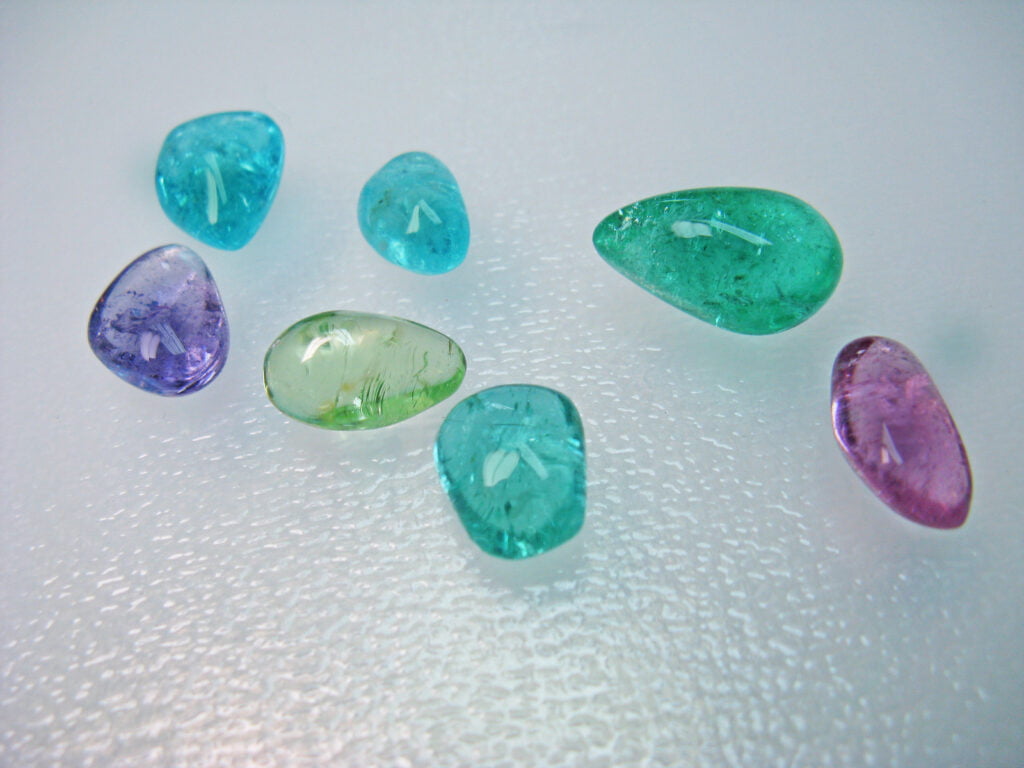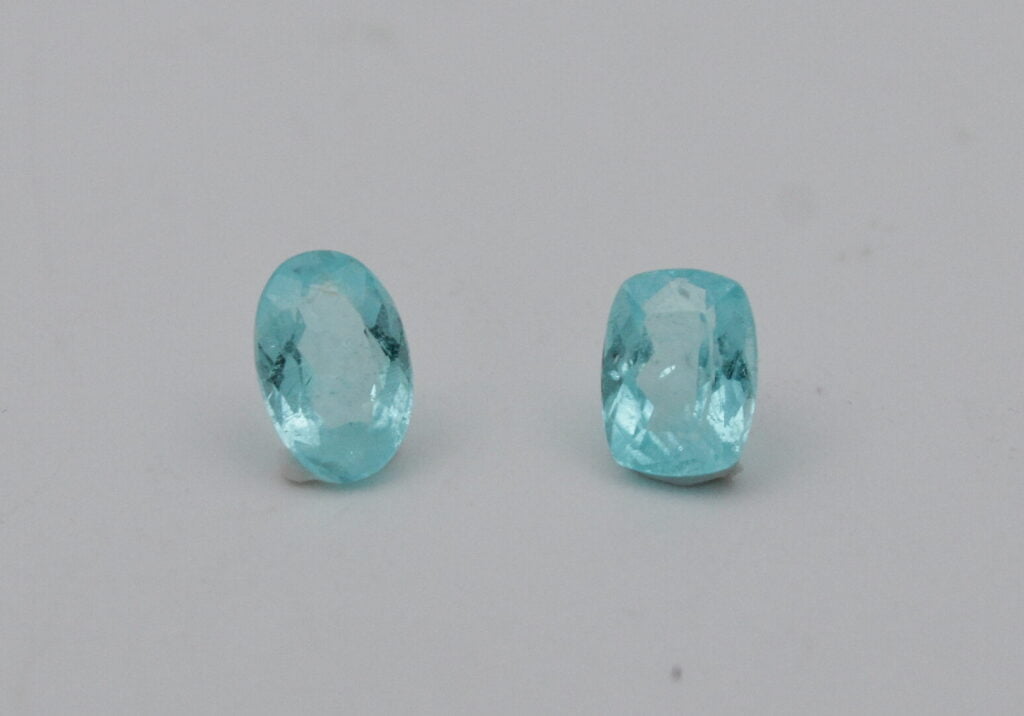October Birthstones: Opal & Tourmaline
Opal
Opal is a very familiar and easy-to-recognise gemstone that has enchanted anyone that comes across with its beautiful display of colours. It is the only stone that displays the phenomenon, play-of-colour (POC), through its unique crystal structure. Precious opal is capable of showcasing every colour of the spectrum and truly defines the definition of “no two gemstones are the same” from the result of its POC patterns that are so randomly constructed. For its popularity, it has been assigned as the birthstone for October. It was thought to bring the power of foresight and hope.
Unlike the majority of gemstones, opal does not have a crystal structure, which makes it an amorphous gem. Its atomic structure is made up of billions of submicroscopic silica spheres that vary in size and arrangement, which ultimately give opal the ability to display POC.
As a popular stone, opal is relatively softer than many other gemstones at 5.5 – 6 on the Mohs hardness scale. Thus, opals are usually placed in bezel settings rather than with prongs to provide more all-rounded protection to the gem.
There are many types of opal in its existence. Some dazzle with POC, known as precious opal, and some do not which are called common opal. For a common opal, also known as potch opal, does not diffract light thus it has no POC but it does come in a variety of colours.
For precious opals, it can be white, black, crystal/water, fire, and boulder opal. Majority of the precious opals in the market are made up of white opals, whereas black opals are rarer hence highly desired and valued. Crystal/water opals have transparent to semi-transparent body with varied POC quality. Fire opals have yellow, orange, or red body colour, and finally boulder opal contains a thin layer of original matrix to support the opal.
Tourmaline
As a mineral itself, tourmaline is one of the most complex groups ever existed. In total there are 32 recognized group tourmaline members, but only five among them are gemmologically significant. Those five comprises Elbaite, Schorl, Liddicoatite, Dravite, and Uvite. In each group, there is a tremendous difference in its chemical content. With that said, this group accounts for nearly all gem-quality tourmalines in the market.
Due to its wide array of chemicals or trace elements, tourmaline is considered to be the most colourful gemstone because it comes in almost all kinds of colours. Besides having one solid hue, it also can be in mixed-colour, commonly referred to as bi-coloured or parti-coloured. With different colours, come different trade names too. Pink to red tourmalines are called Rubelite, blues are Indicolite, deep greens are chrome tourmalines, and the famed neon blue or green tourmaline that is known as Paraiba..
A rather much not known fact about tourmalines is it was used to be a favourite gem among the emperors during the Tang Dynasty. Pink tourmaline in particular was mass exported from California to China. Now it is served as an alternative to October birthstones and many believe that tourmaline brings calm and serenity to the wearer.






